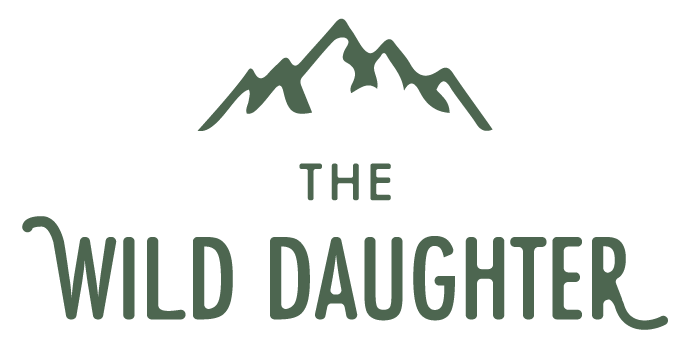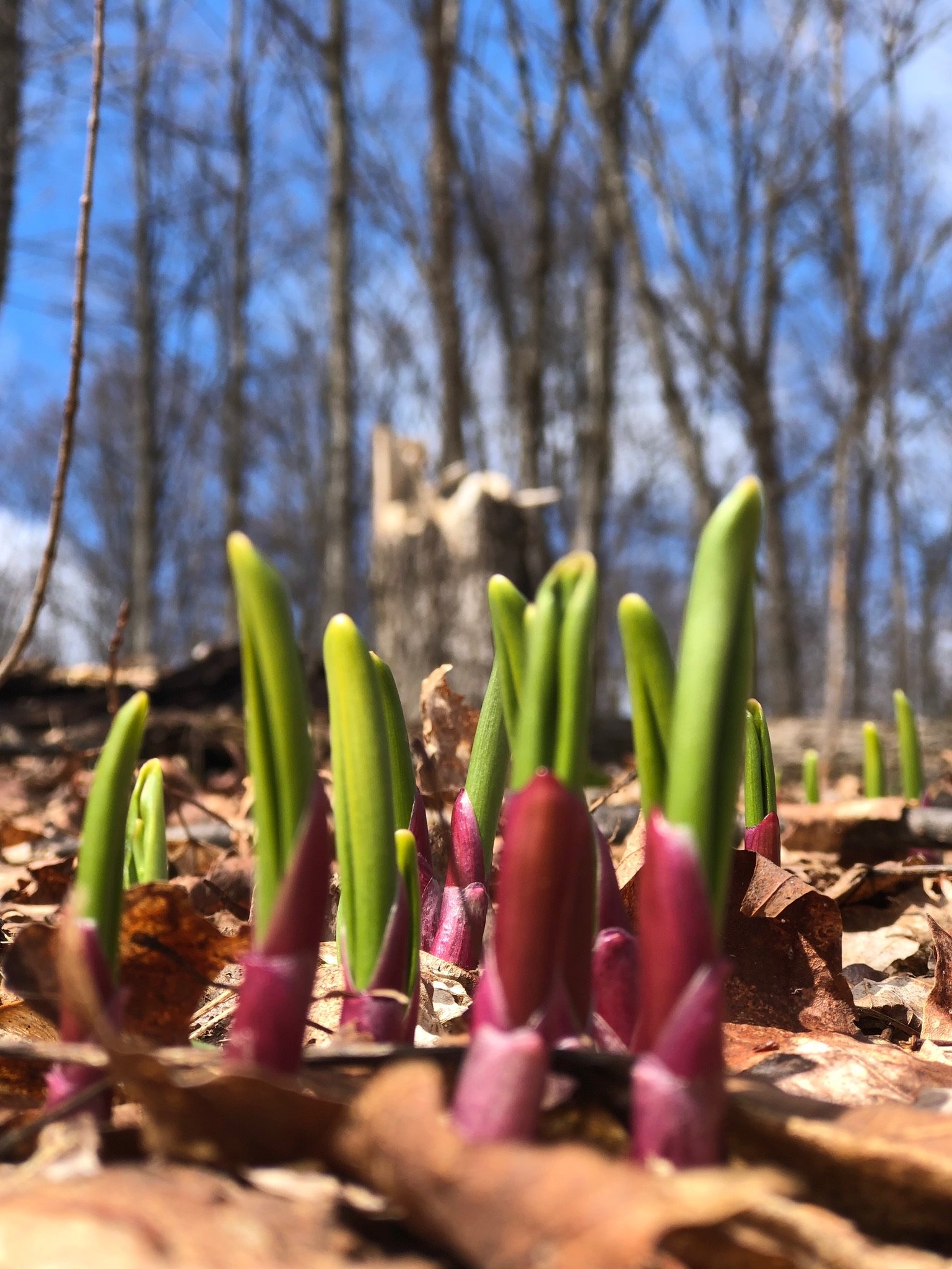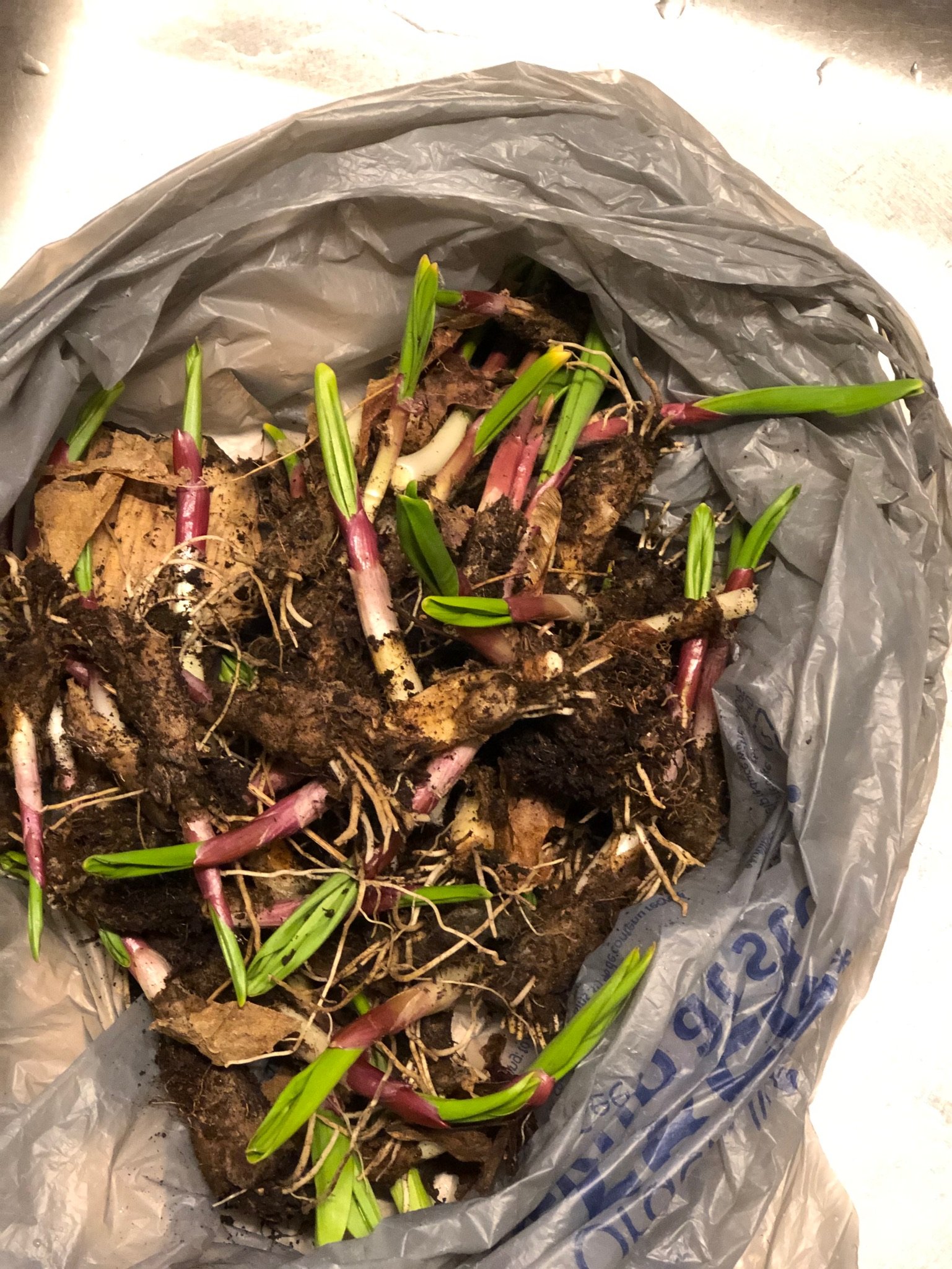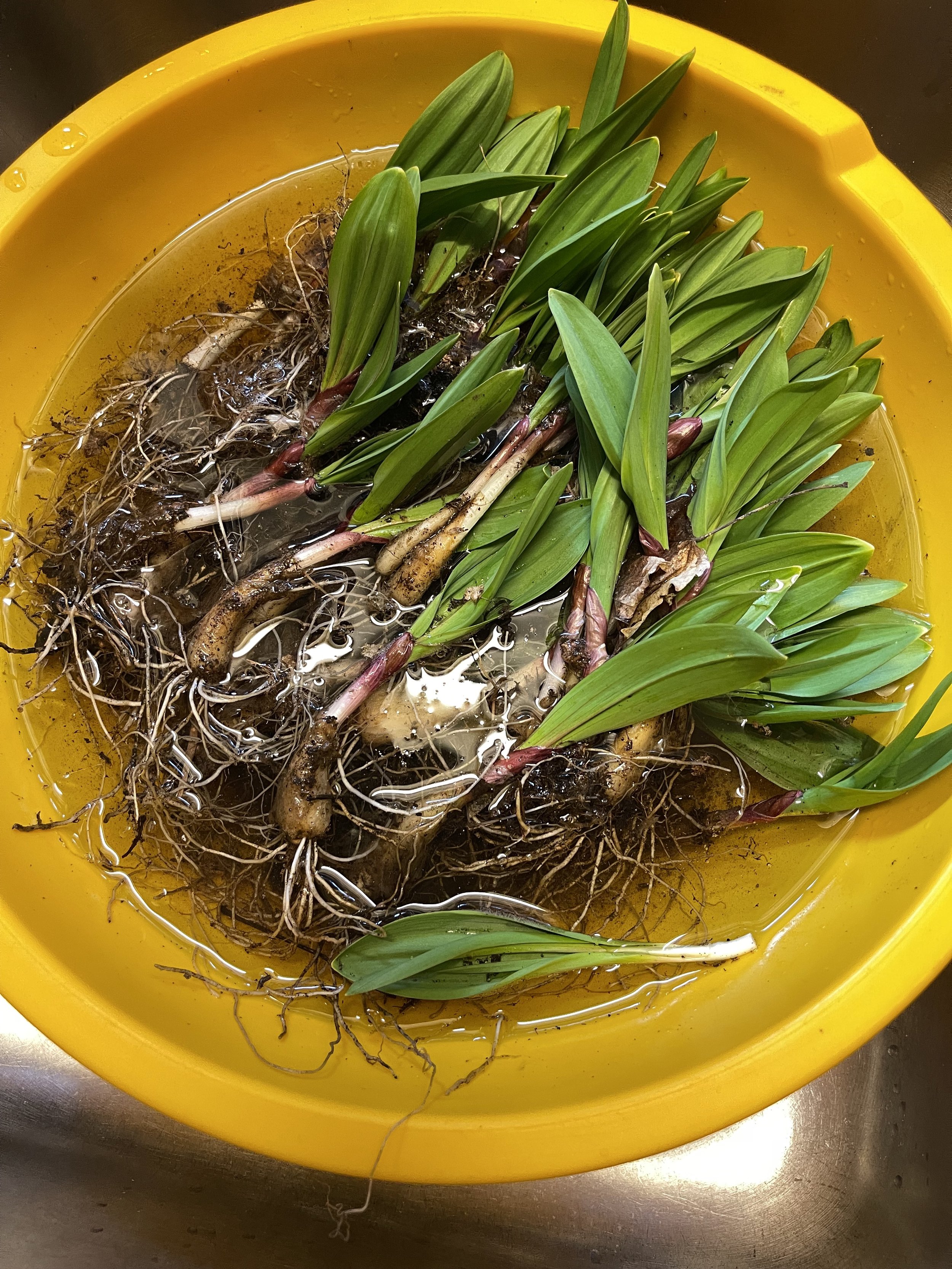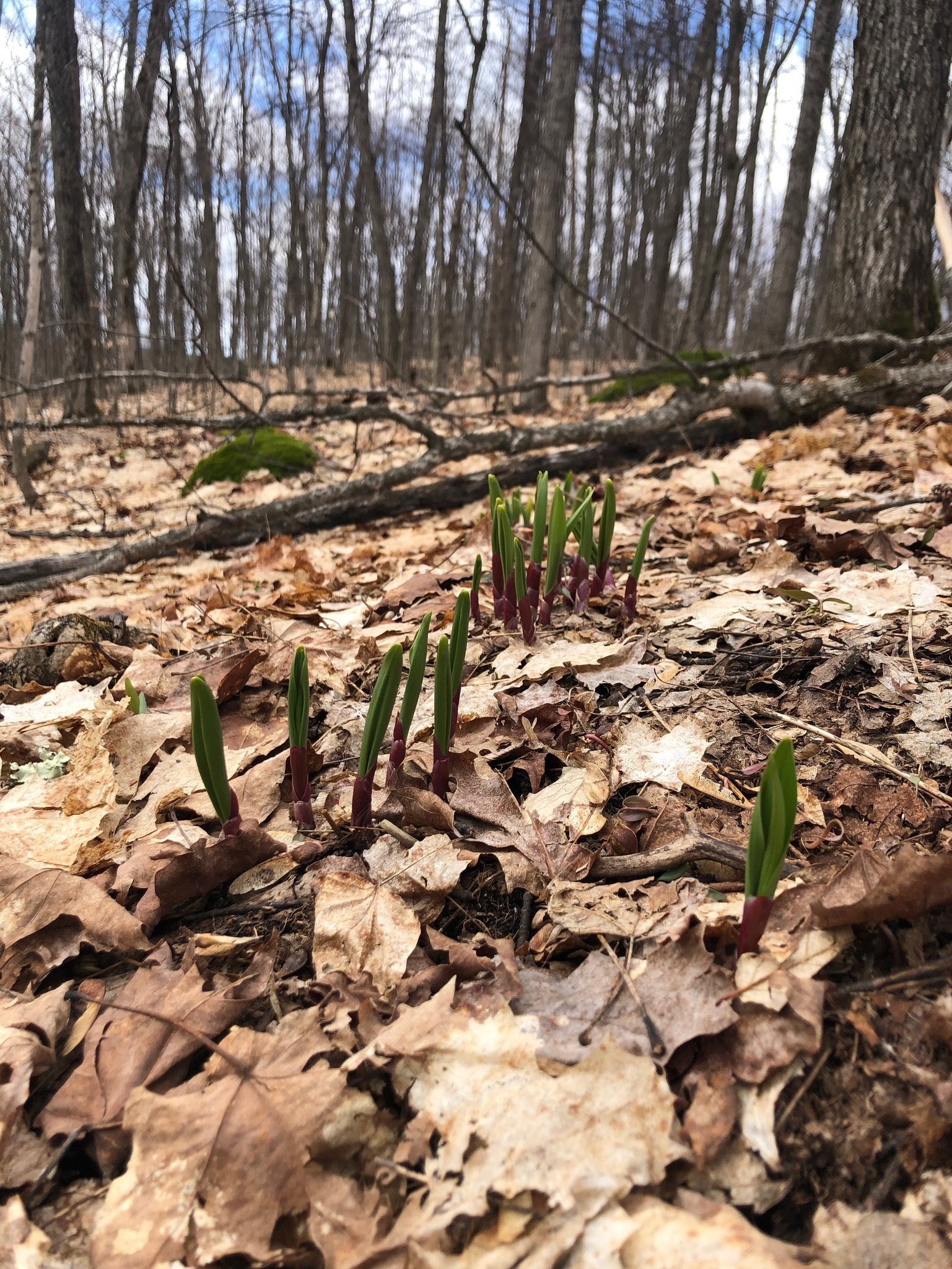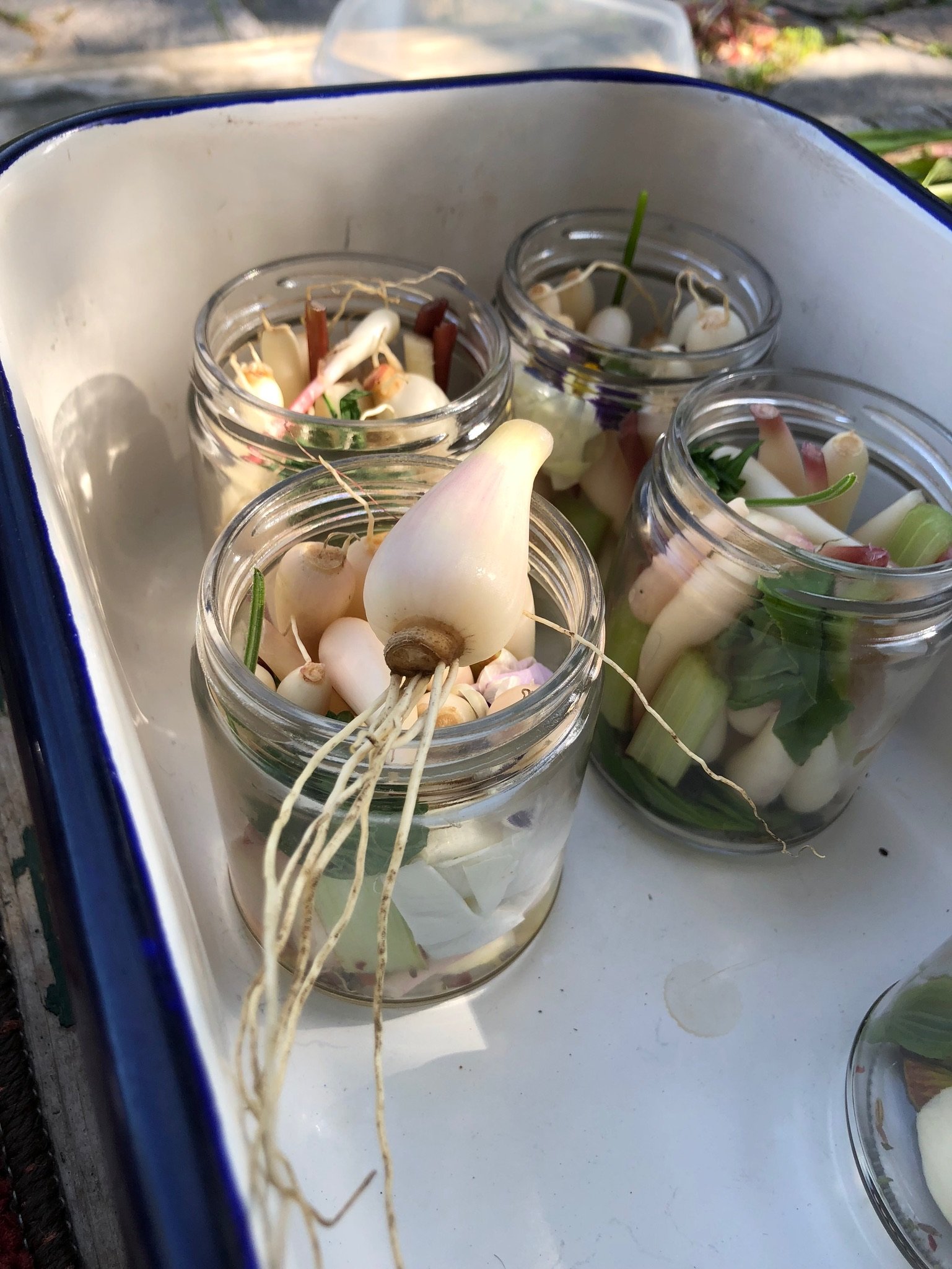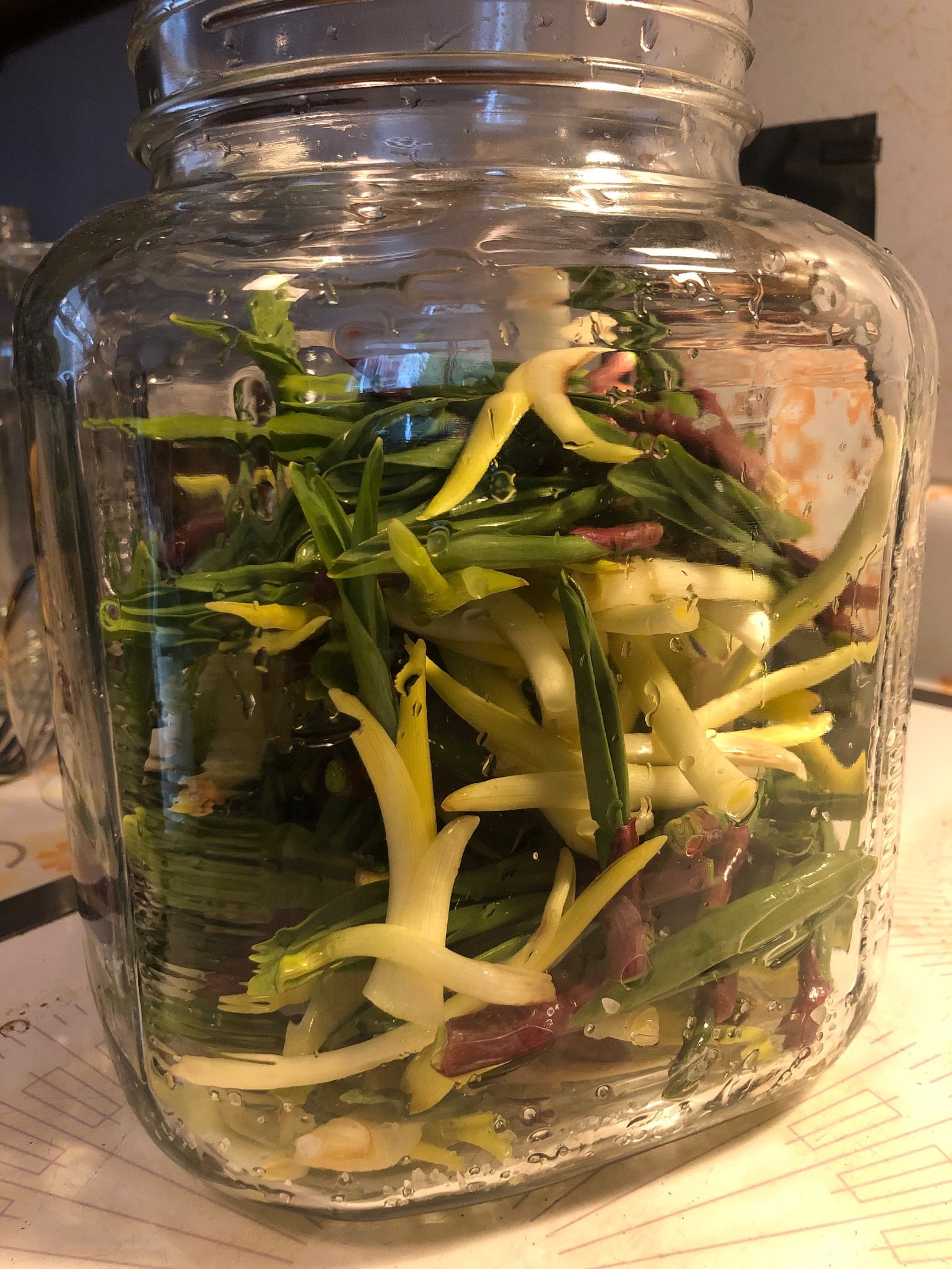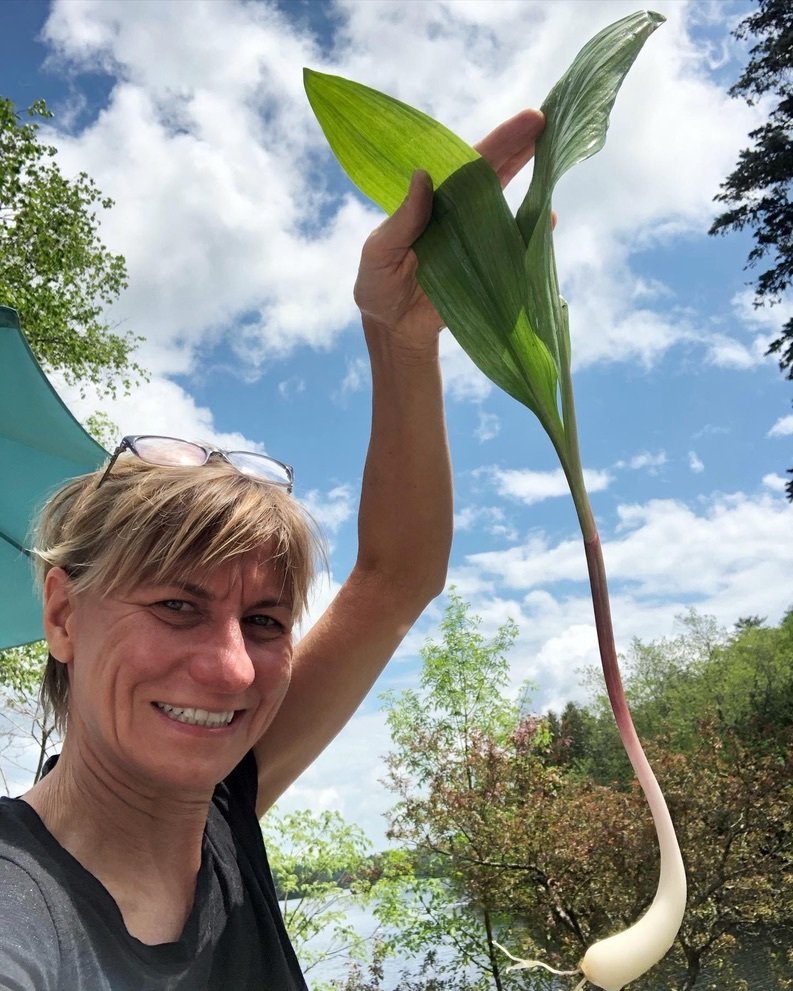Let Me Tell You Abour Wild Leeks
A Guide to Connecting with Nature’s Early Spring Bounty
I could write a book about the years of experience I’ve had with Wild Leeks.
They have connected me to my ancestors, wild turkeys, a couple of owls and a few strangers. They have shown me joy, peace and excitement. They have demonstrated resilience, adaptation and beauty. And most of all they have helped me develop a deep long lasting connection with nature I never thought existed or would ever end.
My first experience with wild leeks was well before my deep interest in foraged foods and nature. Seeing them and picking them for the first time was on the side of a mountain with my mom. We had a couple buckets, a shovel, some gloves and rubber boots. We picked enough for a few meals, and honestly, I don’t even recall how we prepared them.
Today, Wild Leek harvesting is a big part of my foraging. I process them in many stages of their growth from drying the leaves, to making pesto. I love Fermenting the bulbs, or braising the entire plant and freezing for future use. I infuse the flowers with honey and even age the bulbs in honey like many do with garlic.
Wild Leeks start to pop up in Muskoka when the maple sap is still running and snow is still present in the forest.
Often when their little green shoots pop through the ground covered in last year’s leaves, the air is filled with a fresh but musty aroma. When I take my first few trips out to see if they are popping I’m filled with excitement as I know not only is the leek waking from it’s winter’s rest but so much more is under the forest floor. Stepping through the damp land I almost don’t want to walk because as I look closer and get right down to the ground I can see so much more starting to grow.
This is the time of year the forest awakens.
Mid April as the forest wakes up our bodies are waking too, ready to get out of hibernation and begin doing again, starting to become more physically active. The forest is doing the same and the foods nature provides at this time of year are also the type of foods we need to cleanse and awaken our body to prepare it for absorption and nutrients to give us energy.
The Growth Stages & How to Harvest Leeks
Did I just find the longest wild leek in Muskoka?
When the Wild Leek is young, 2-3” of green leaf popping out of the ground, I’ll harvest enough to enjoy a refreshing meal and ferment a few because they look so beautiful and tiny. Enjoying a perfect little pickled leek definitely creates awareness and gratitude during a meal, especially if you’re sharing this experience.
The best time to harvest Wild Leeks is when the leaves are at their largest and greenest and before the heat of the sun begins to be strong. This is generally when the black flies and mosquitoes have started. Often Purple Violets and Morel mushrooms are in season and Fiddleheads are ready for picking. This is also the time when the Wild Leeks will have begun their reproductive stage and start producing a flower shoot called a scape.
The older the Wild Leek plant is, the larger it will be. A young forest can produce a cluster of leeks that have 4 spindly plants growing 4” in total. Where an old undisturbed forest of Leeks can offer a field as far as the eye can see, with clusters having 15 plants growing 13” in length out of the ground. Harvesting the tops or the greens of the plant and not the bulb will not kill the plant and allow it to grow again next year. The greens are very delicate and bruise and break down quickly. They are difficult to dry and delicious fresh and raw or cooked like spinach or added to fryups or grainy dishes. They will add a garlicky onion umami experience to any dish. The best way to enjoy the greens well after the season ends is to puree the greens like a pesto and freeze it.
Foraging for Wild Leeks can be a truly rewarding experience, but it is important to do it responsibly and sustainably. These plants take a long time to grow and propagate, so it is crucial to harvest them carefully and only in areas where they are abundant. Join me in the forest and discover the joys of foraging for this early spring bounty.
Using Wild Leeks
Leeks are spicy and awakening in flavour. Their leaves and bulbs are edible. They are a perennial plant coming back year after year from the same root bulb or from the spreading of seeds. They spread and populate very slowly and are considered a plant that should be carefully harvested only in areas where they are abundant. I’m fortunate to have a place that no one goes to and the leeks have been doing their thing there for decades. You can tell their age by their root bulb, there will be nodules or layers of growth visible where the root meets the bulb. When I hike this area in the winter, I think of all these leek friends under my feet and that we’ll see each other soon…without question.
AT A GLANCE - WILD LEEKS
Mid-April is when the leeks starts poking out of the forrest, don’t step on them!
They are part of the Allium family, which includes onions, garlic, and chives
Wild leeks have a distinct heavenly smell - a mix of onion and garlic
With 2-3” poking out of the ground, you can start harvesting a bit of them (see video below)
These plants take a long time to grow and propagate, so it is crucial to harvest them carefully and only in areas where they are abundant.
